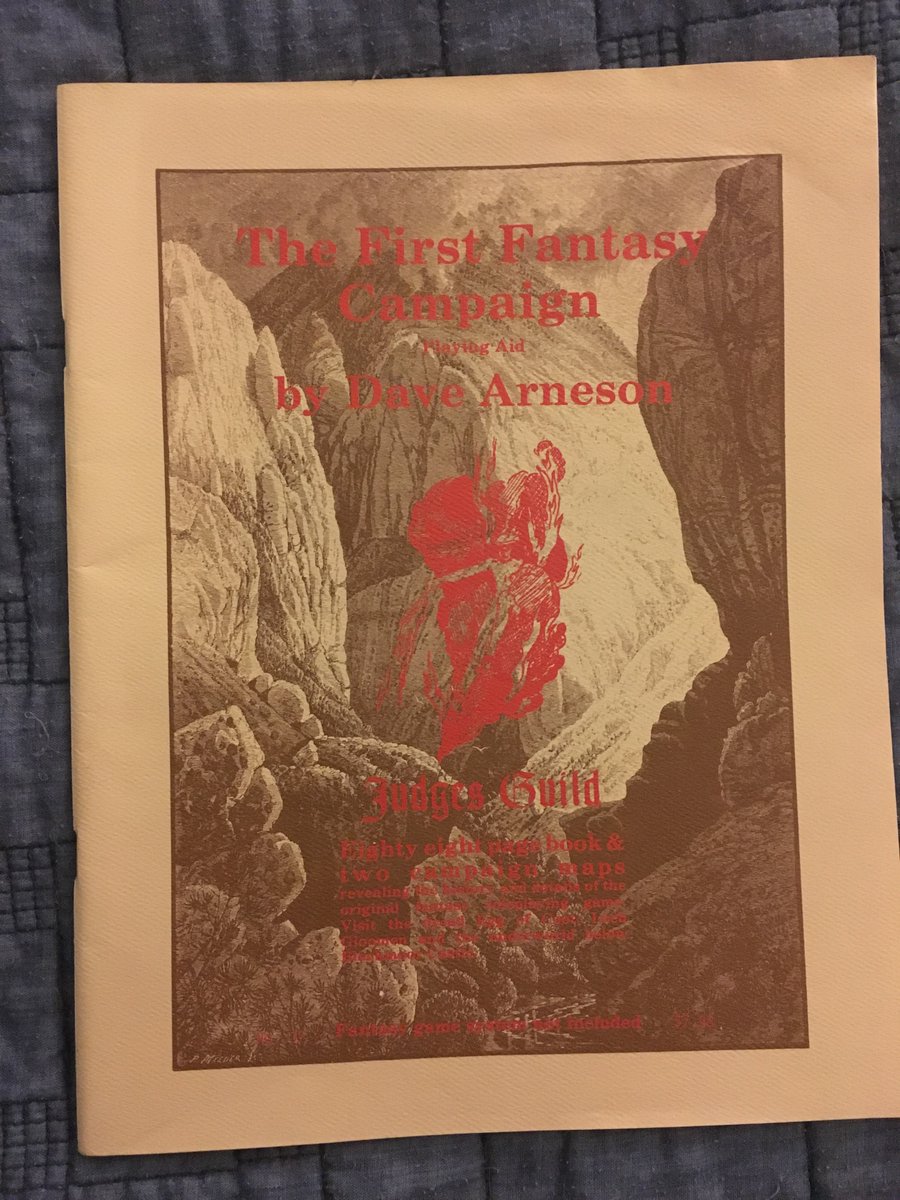
While I'm waiting to possibly play a boardgame tonight, let me do an #OldSchoolDungeonsAndDragons (which may get interrupted for a while while I game): Dragons, by Cory Glaberson (1986)! 

"Dragons" is another supplement in the Role Aids line for D&D that was produced by Mayfair Games, originally under the untested premise that TSR couldn't sue them for making unlicensed products!
Okay, let me pick up this #OldSchoolDungeonsAndDragons thread that got interrupted on the weekend... because I was playing D&D! So we're talking "Dragons," part of the Role Aids line of products for D&D. 

Role Aids produced game supplements and adventures with annoyingly generic names. Like "Undead," which presented an entire undead nation campaign setting and intro adventures. 

"Dragons" is also a surprisingly detailed product, despite the uninspired name. It presents tons of details and new rules for dragons, a new character class, an entire campaign setting, the Dragonlands, and linked adventures as an introduction to them!
As a nod to Tiamat, it introduces a new dragon type, the spectral dragon, which is the most powerful type and always has more than one head (though not typically as many as Tiamat). 

"Dragons" provides rules for players actually roleplaying dragons, though it provides stern warnings about how a dragon can unbalance the party at low levels. 

There are some detailed drawings of dragon anatomy, in case you ever wondered what a dragon's brain looked like. 

There are also descriptions of some dragon physiology. Ever wonder how a dragon, despite its size, manages to fly? "Dragons" has you covered. Buoyant gas-filled extra lungs! (Not terribly fond of these rules, tbh.) 

Another fascinating bit of detail is a list of common ailments a dragon can suffer, including both diseases and parasites. For me, though, these rules feel like they take away a bit of the "magic" of dragons. 

One set of rules that I really like adds to the magic of dragons through their dreams. When dragons dream, they alter the world around them, changing the weather or even causing catastrophic events to happen! There's a random table to roll for a dream. 

In another bit of curious world-building, dragons are described as having made an alliance with giant termites, who perform all the lair-building activities in exchange for protection. 

Most fascinating, however, is the campaign setting: the Dragonlands, where dragons rule over human settlements and humans and dragons coexist. Dragons can visit the towns to make proclamations and even have meetings. 

Along with this human/dragon collaboration, a new fighter subclass is introduced, the dragonlords, who can ride dragons in a cooperative agreement. 

(One strongly suspects that the dragonlords were inspired by the dragon riders in the Dragonlance series, which began publication several years earlier.) 

The adventures involve the characters traveling to the Dragonlands to prevent an all-out dragon-human war. The first part is a mini-boardgame, where the PCs must avoid enemy patrols to reach their destination. (I kinda want to try this idea in a game myself now.) 

Overall, "Dragons" doesn't quite come together for me as a coherent campaign setting. But it is obviously a labor of love for its author, and there are a number of cool ideas worth adapting for one's own campaign setting! /END
PS forgot to mention that "Dragons" was a cross-promotion with Grenadier miniatures, which was running a Dragon Lords "Dragon of the Month" series of minis! More info here: cs.cmu.edu/~tpope/sol/gre… 

• • •
Missing some Tweet in this thread? You can try to
force a refresh







